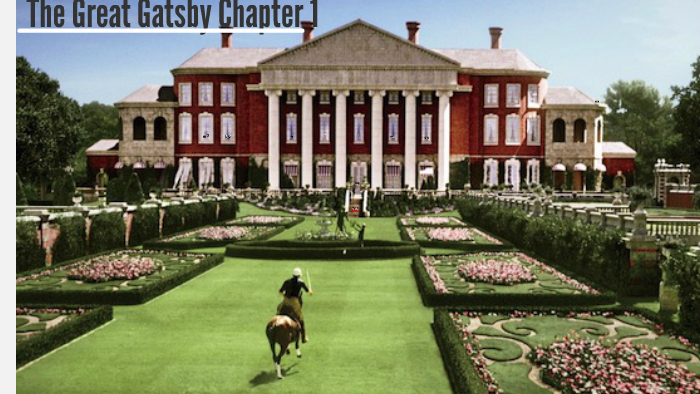
His color coincides with his description of himself as a knowledgeable, fair person. This pattern is applied Nick, too, because when he attends Gatsby’s party in chapter 3, he is wearing a white suit. On the other hand, for poor characters, he uses dark and desperate colors. For Daisy, who is rich and elegant, he uses bright colors such as white and rosy color to describe her appearance and her life. In order to differentiate them more clearly, Fitzgerald uses different colors for the characters. Similarly, George Wilson, Myrtle’ husband, is a poor man without confidence or authority. In this novel, Daisy is a woman from a wealthy family and the wife of Tom, a very wealthy, educated man, while Myrtle Wilson is a poor woman living in poor town, who is a mistress of Tom. Fitzgerald describes many things as grey, including “grey men,” “grey cars” and “grey land.” Most of all, unlike Daisy’s room with bright white color, Myrtle’s house has cement-colored wall, which creates an evident contrast with Tom’s mansion.

On the other hand, the valley of ashes where the Wilsons’ house is located is best characterized by grey and dark color. And the very room where Daisy stays is depicted with white and wine color the phrase “frosted wedding cake” also supports this sense, since it gives an impression like a white snow and white cream. Tom’s mansion has outer white walls, and its interior is mainly described with white and beautiful red color the hallway was rosy color and the very room where Daisy is white and wine color. Secondly, Fitzgerald attributes different colors to places in order to indicate their difference in wealth, condition, and dignity, as well as the characters in that place. We walked through a high hallway into a bright rosy colored space.įrosted wedding cake of the ceiling-and then rippled over the wine-colored rugĪbove the grey land and the spasms of bleak dust Similarly, George Wilson in this scene is wearing a dark suit, to the extent he looks the same as the color of the wall.Īcross the courtesy bay the white palaces of fashionable East Egg glittered along the water. For example, when Myrtle Wilson first appears, Fitzgerald describes that she is wearing dark blue and black dress. He says that Daisy and Jordan was “in white” and that they were wearing “white dresses.” On the other hand, when Fitzgerald portrays people living in valley of ashes, he uses mainly dark and unpleasant colors. When he describes Daisy and Jordan, he uses white color very often. His attempt is apparent in his description of the characters’ clothes. They were both in white.įirst, Fitzgerald uses different colors in order to contrast their appearance itself. Two young women were buoyed up as though upon an anchored balloon.


A white ashen dust veiled his dark suit and his pale hair. Her face, above a spotted dress of dark blue crepe-de-chineĪgreed Wilson hurriedly and went toward the little office, mingling immediately with the cement color of the walls. In chapter 1, 2, and 3, however, he focuses more on contrasting characters through the colors that representing them, including the colors of their clothes and the colors of their houses. In Great Gatsby, Fitzgerald uses many colors to depict the setting and characters.


 0 kommentar(er)
0 kommentar(er)
